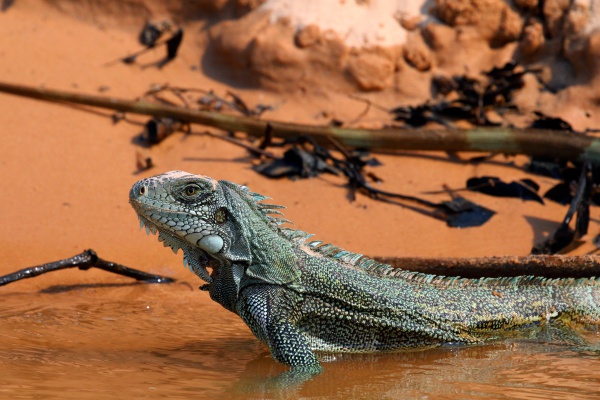Facts About Green iguana
The green iguana, often referred to as the American iguana, is a large, primarily herbivorous lizard that ranges from southern Brazil to Mexico. Feral populations can also be found in areas such as Puerto Rico, Florida, Hawaii, and the U.S. Virgin Islands. They are popular pets due to their calm demeanor and vibrant colors, but they require significant care, including specialized space, lighting, and heat.
First described by Carl Linnaeus in 1758, green iguanas have been the subject of extensive study. While subspecies were once hypothesized, they are now considered regional variants. DNA research indicates that these iguanas likely originated in South America and subsequently spread to Central America and the Caribbean. The name "iguana" derives from the Taíno word "iwana."
Green iguanas are diurnal, enjoy climbing, and are proficient swimmers. They also dig burrows and possess specialized adaptations to support their primarily plant-based diet. Physically, they feature sharp teeth, spines along their backs, and a dewlap—a flap of skin under the chin used for temperature regulation and communication. They have excellent vision and a "third eye" on their heads, known as a parietal eye, which is sensitive to changes in light and dark.
Male green iguanas possess femoral pores and exhibit dominant behaviors, particularly during the mating season. Females lay eggs annually and do not provide post-laying care. Juvenile iguanas initially stay together in family groups, with males protecting the females.
When threatened or engaged in social interactions, green iguanas display a variety of behaviors. Their diet consists mainly of plants, requiring a specific balance of minerals to maintain health. Caring for them in captivity is challenging, demanding appropriate lighting, temperature, and nutrition.
Green iguanas are considered invasive in many regions, impacting local ecosystems and sometimes posing risks to human health. Conservation efforts focus on regulating trade and protecting their natural habitats. These iguanas hold cultural significance in ancient art and have been a food source in Central and South America for millennia.

 Honduras
Honduras